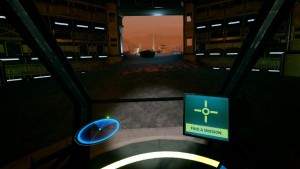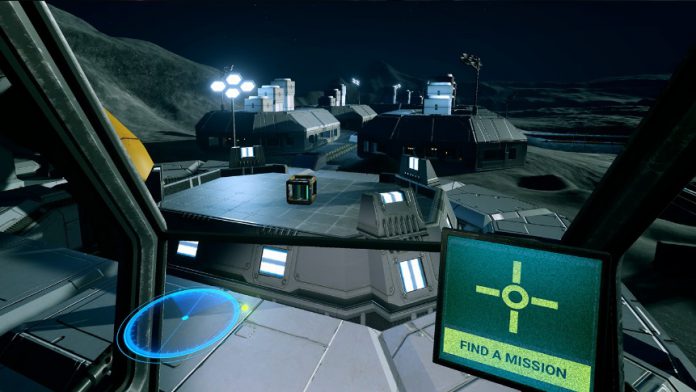UK studio Think Heavy made an early play for virtual reality (VR), with the release of FIRMA as a ‘concept’ title on Oculus Home shortly after the launch of the Oculus Rift itself. Offered as what is essentially the equivalent of a Steam ‘Early Access’ title, FIRMA has received very little attention since it’s debut, and yet it does warrant a second look. And VRFocus is about to tell you why.
Set in the distant future, the player takes on the role of a pilot in control of a fast, highly manoeuvrable loader vehicle across the Moon and Mars. You must navigate the surface and the skies, race to deliver vital supplies to scientific bases in hostile environments and outwit potential threats. Essentially, you’re a space-based delivery boy trying to get to your customer before the pizza gets cold.
The gameplay of FIRMA is solid yet unremarkable. Beginning in a hanger and simply asking the player to pilot across a number of nodes as a tutorial, the experience then opens up to reveal a planet’s surface. A basic, short-range delivery mission is given before the videogame offers a range of different missions opted-into by simply arriving at a landing pad (which also heals and refuels your vehicle) and either accepting or declining the mission.
If none of this makes FIRMA sound like an experience you should think twice about, that’s because – on the surface, at least – it isn’t. What needs to be taken into consideration is the control scheme. With FIRMA placing the player in an open-fronted vehicle one might wonder how navigation is handled. Leaning closer towards Minority Media’s Time Machine VR than Fireproof Games’ Omega Agent, Think Heavy has actually got right-stick turning handled correctly.

For the uninitiated, one of the key rules of modern VR is that placing head-movement on the right analogue stick (as is the tradition for console-based first-person experiences) is a big no-no. It’s likely to cause simulation sickness in the player due the disconnect between the movement of a player’s vision and lack of movement of their head. Many videogames have ignored this to varying degrees of success; FIRMA’s design decision seems less one of ignorance and more of careful iteration and execution.
Given that the player’s craft as flight control, the right trigger on the Xbox One controller is assigned to thrusters. These will launch the player immediately skyward, and the left analogue stick used for particularly precise directional thrust and manoeuvring. The right analogue stick is reserved solely for pivoting the front viewport of your craft left or right.
It’s not certain which part of this limitation of the right analogue stick makes FIRMA a comfortable experience while other VR titles have failed with similar control schemes. It could potentially be the visual design paired with the slow, precise implementation, or simply a case of FIRMA’s moody darkness and constant, dependable horizon view resulting in a distancing effect from the motion as the player relates to being enclosed in a vehicle. Either way, FIRMA may not be a landmark videogame experience, but it certainly offers lessons to be learnt in control scheme implementation.















